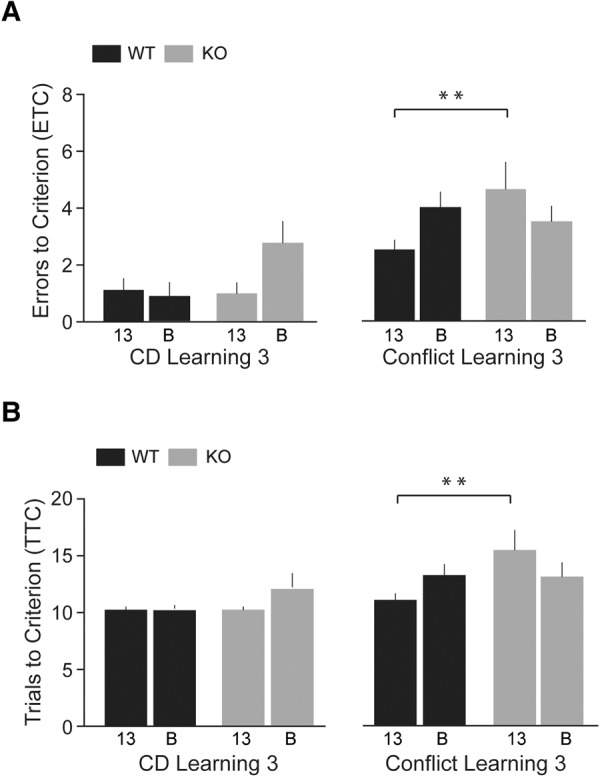Figure 4.

Compound Discrimination (CD) Learning 3 and Conflict Learning 3 (Phase 3, IDS). Numbers of ETC (A) and TTC (B) were recorded. KO and WT animals performed comparably in the Compound Discrimination Learning session (left panels, HR = 0.74, 95% CI 0.51–1.08, P = 0.12). There was also no significant difference between the two strains in this session (HR = 1.35, 95% CI 0.90–2.02, P = 0.14; not shown). However, persistently impaired cognitive flexibility of BC1 KO-13 mice was revealed in Conflict Learning session 3 (right panels, HR = 0.29, 95% CI 0.11–0.71, P = 0.007): more ETC were committed and more TTC were required by KO-13 mice than by WT-13 mice. KO-B and WT-B animals performed similarly in the Conflict Learning session (HR = 1.15, 95% CI 0.58–2.28, P = 0.69). Performance of WT-B mice was significantly inferior to that of WT-13 mice in the Conflict Learning session (HR = 0.45, 95% CI 0.23–0.89, P = 0.02; not shown). A significant interaction of genotype versus strain (P = 0.017) is noted. n = 8 for each group.
